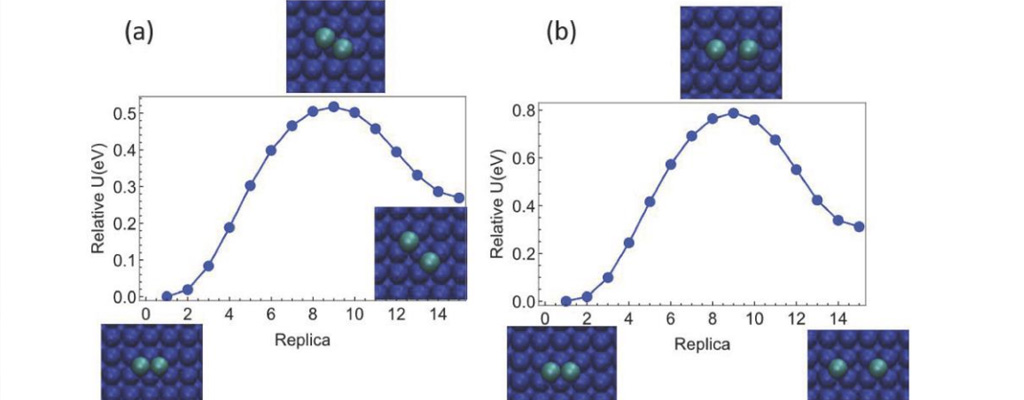Research conducted by:
Jianming Cui, doctoral candidate in chemical engineering, Penn State, Kristen A. Fichthorn, Merrell Fenske Professor of Chemical Engineering and Professor of Physics
Tags:
chemistry molecular dynamics molecular simulations physics
Research Summary:
Accelerated molecular-dynamics simulations based on hyperdynamics (HD) can significantly improve the efficiency of simulations of condensed-phase systems that evolve via rare events. However, these simulations are not generally easy to apply since appropriate boosts are usually unknown. In this work, the researchers developed a method to predict safe and effective values of the boost.
How Roar played a role in this research:
The researchers were able to test the computational savings with the method. For regular molecular dynamics simulations, it will take 135 wallclock hours to reach 1 microsecond, running on 4 cores of Penn State’s Roar cluster. With the time-boost factor range of 20-40 in Table II, a simulation with OptiBoost will require 12-14 hours (9 hour for selecting a boost and 3-5 hours for HD simulations running on 4 cores). The researchers showed that the computational effort has moved from executing the simulation to selecting the boost.
|
Article Title: |
OptiBoost: A Method for Choosing a Safe and Efficient Boost for the Bond-Boost Method in Accelerated Molecular Dynamics Simulations with Hyperdynamics |
|---|---|
|
Published In: |
The Journal of Chemical Physics |
|
Abstract: |
Accelerated molecular-dynamics (MD) simulations based on hyperdynamics (HD) can significantly improve the efficiency of MD simulations of condensed-phase systems that evolve via rare events. However, such simulations are not generally easy to apply since appropriate boosts are usually unknown. In this work, we developed a method called OptiBoost to adjust the value of the boost in HD simulations based on the bond-boost method. We demonstrated the OptiBoost method in simulations on a cosine potential and applied it in three different systems involving Ag diffusion on Ag(100) in vacuum and in ethylene-glycol solvent. In all cases, OptiBoost was able to predict safe and effective values of the boost, indicating the OptiBoost protocol is an effective way to advance the applicability of HD simulations. View article on publisher's website |

